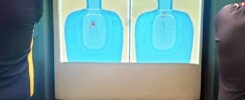
Maximizing the Lifespan of Ballistic Rubber Sheets: Best Practices for Rotation, Maintenance, and Usage
Rotation Schedule:
This is arguably one of the most critical maintenance tasks for extending the life of ballistic rubber sheets. Implementing a structured rotation schedule where each sheet is moved through various positions systematically, whether monthly or quarterly, ensures even wear across all sheets. This involves not only rotating the sheets by 180 degrees and flipping them but also strategically relocating heavily impacted sheets to less intense areas and vice versa. This method helps in distributing the impact load evenly, thereby prolonging the usability of each sheet.
Regular Inspection and Maintenance:
Conduct regular inspections of the sheets tailored to their usage frequency. By identifying signs of excessive wear such as cracks, tears, or delamination in overused areas, you can prevent rapid degradation. Additionally, ensure the sheets are kept clean, free from debris, gunpowder residue, and other contaminants, as these can accelerate wear and potentially lead to chemical breakdown of the material.
Controlled Usage / Range Rules:
It’s crucial to restrict the use of ammunition known for expansion, such as Hollow Points, Wad Cutters, and other expanding rounds. Educating users on the significance of selecting appropriate ammunition and adhering to optimal shooting practices is vital. Consider integrating this topic into training sessions for newcomers and schedule periodic reminders for all users to reinforce these best practices.
Impact Distribution:
If feasible, encourage shooters to spread their impacts evenly across the entire surface of the sheet, rather than focusing on a single spot. Concentrating rounds in one area can hasten the formation of significant holes in the material. Manage this by setting up targets or designing shooting drills that necessitate varied target placements throughout the range.
Environmental Protection:
This advice pertains particularly to outdoor applications: opt for ballistic rubber products that feature UV-resistant formulas, or consider storing them indoors when they’re not in use to mitigate UV degradation. It’s also advisable to avoid exposing the rubber to extreme temperatures where possible, or choose ballistic rubber designed to endure both high heat and severe cold. CRS ballistic rubber products, for instance, incorporate UV protectants and are engineered to withstand temperature extremes. However, not all ballistic rubber products on the market offer these protective features, so selection should be made with care.
Support and Mounting:
Securely mount the rubber sheets to avoid any movement or shifting, which can cause uneven wear or edge damage. Employ a robust backing or support structure to absorb some of the impact energy, thereby reducing stress on the rubber itself.
Impact Mitigation:
In certain scenarios, installing a softer, more cost-effective material ahead of the ballistic rubber can absorb the initial impact energy, thus protecting the rubber. This strategy is particularly useful when dealing with expansive rounds. Additionally, when rubber sheets become too worn for their primary function, they might still be repurposed in less critical areas or cut into smaller pieces for applications with reduced demands, thereby extending their total lifespan.


